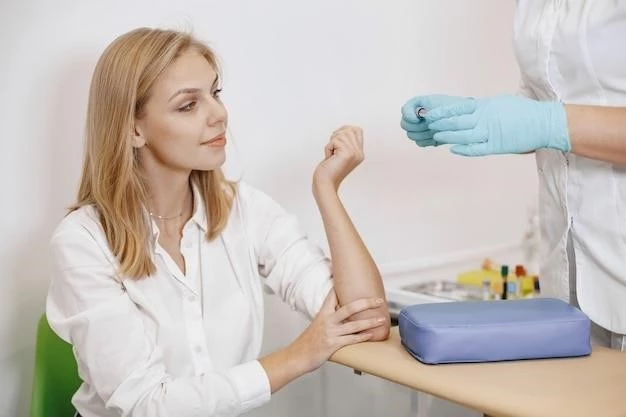Disease⁚ Dermatoosteolysis, Kirghizian Type
Dermatoosteolysis, Kirghizian type is a rare inherited syndrome characterized by progressive degeneration of the skin, bone, and nails․ This disorder is caused by a mutation in the connective tissue genes, leading to deformities, pain, and osteolysis․
Introduction
Dermatoosteolysis, Kirghizian type is a rare inherited syndrome first identified in the Kirghizia region․ This disorder presents with a unique combination of skin, bone, and nail degeneration, making it a distinctive condition in the field of medical genetics․ The genetic mutation associated with Dermatoosteolysis, Kirghizian type leads to a progressive connective tissue degeneration, resulting in deformities and pain for affected individuals․
Individuals with this syndrome often face challenges in daily activities due to the debilitating nature of the condition․ Understanding the pathophysiology and clinical manifestations of Dermatoosteolysis, Kirghizian type is crucial for accurate diagnosis and appropriate management strategies․ Despite its rarity, ongoing research and clinical trials aim to enhance our knowledge of this syndrome and improve outcomes for those living with it․
This article will explore the genetics and inheritance patterns of Dermatoosteolysis, Kirghizian type, delve into the symptoms experienced by individuals with this syndrome, discuss the diagnostic approaches used by healthcare professionals, provide insights into the prognosis of the condition, and outline various treatment options and management strategies available․ Furthermore, the article will shed light on the latest advancements in research and clinical trials focused on advancing our understanding of this rare disorder․
Genetics and Inheritance
Dermatoosteolysis, Kirghizian type is primarily caused by mutations in specific genes that are involved in the regulation of connective tissue function․ These genetic mutations are inherited in an autosomal recessive pattern, meaning that affected individuals inherit one mutated gene from each parent․
The responsible genes are crucial for maintaining the integrity and strength of connective tissues, which play a vital role in the structure and function of the skin, bones, and nails․ When these genes are mutated, the connective tissues become progressively degenerated, leading to the characteristic symptoms of Dermatoosteolysis, Kirghizian type․
Genetic testing can be utilized to identify the specific mutations causing the syndrome in an individual․ This information not only aids in confirming the diagnosis but also allows for genetic counseling of the affected individual and their families․ Understanding the genetic basis of Dermatoosteolysis, Kirghizian type is essential for early detection, intervention, and family planning․
Research efforts are focused on elucidating the precise molecular mechanisms by which the mutated genes contribute to the degeneration of connective tissues in this syndrome․ By unraveling the genetic pathways involved, scientists aim to develop targeted therapies that can potentially halt or slow down the progression of Dermatoosteolysis, Kirghizian type, improving the quality of life for affected individuals․
Symptoms
Individuals with Dermatoosteolysis, Kirghizian type experience a wide range of symptoms affecting the skin, bones, and nails due to the progressive degeneration of connective tissues․ The most common symptoms include⁚
- Skin Changes⁚ Affected individuals may exhibit abnormal skin pigmentation, thickening, and fragility․ Skin lesions and ulcerations may also develop, leading to chronic wounds․
- Bone Deformities⁚ Progressive osteolysis, the gradual resorption of bone tissue, can result in bone deformities, fractures, and osteoporosis․ This may lead to skeletal abnormalities and growth impairment․
- Nail Abnormalities⁚ Individuals may experience dystrophic changes in the nails, including thickening, splitting, and deformities․ Nail plate dystrophy is a common feature of Dermatoosteolysis, Kirghizian type․
- Pain and Discomfort⁚ Chronic pain, particularly in the bones and joints, is a common symptom of the syndrome․ Discomfort and limited mobility can significantly impact the quality of life of affected individuals․
- Connective Tissue Degeneration⁚ The underlying degeneration of connective tissues can manifest as joint laxity, hypermobility, and tissue fragility, contributing to the overall symptomatology of the syndrome․
It is important for healthcare providers to recognize these symptoms and their progressive nature to facilitate early diagnosis and intervention․ Symptom management strategies aim to alleviate pain, address skin and nail complications, optimize bone health, and improve overall quality of life for individuals living with Dermatoosteolysis, Kirghizian type․

Diagnosis
Diagnosing Dermatoosteolysis, Kirghizian type involves a comprehensive evaluation of the patient’s clinical presentation, family history, and genetic testing․ Healthcare professionals use a multidisciplinary approach to confirm the presence of the syndrome and tailor management strategies accordingly․
Diagnostic procedures for Dermatoosteolysis, Kirghizian type may include⁚
- Clinical Examination⁚ A thorough physical examination to assess skin changes, bone deformities, and nail abnormalities is essential in the diagnostic process․
- Imaging Studies⁚ X-rays, CT scans, or MRI scans may be conducted to visualize bone structures, identify osteolysis, fractures, and assess the extent of skeletal abnormalities․
- Genetic Testing⁚ Genetic analysis to identify mutations in the relevant connective tissue genes associated with Dermatoosteolysis, Kirghizian type plays a critical role in confirming the diagnosis and guiding genetic counseling․
- Biopsy⁚ In some cases, a skin or bone biopsy may be performed to examine tissue samples under a microscope to aid in the diagnosis of the syndrome․
Early and accurate diagnosis of Dermatoosteolysis, Kirghizian type is essential for initiating appropriate treatment and management strategies to address the symptoms and implications of the syndrome effectively․ Collaborating with genetic specialists and healthcare teams proficient in rare genetic disorders is key to ensuring a timely and precise diagnosis for individuals with this rare syndrome․
Prognosis
The prognosis for individuals with Dermatoosteolysis, Kirghizian type varies depending on the severity of symptoms, the extent of connective tissue degeneration, and the timeliness of diagnosis and intervention․ As a rare and progressive disorder, the prognosis of this syndrome can be challenging to predict accurately․
Key factors that influence the prognosis of Dermatoosteolysis, Kirghizian type include⁚
- Disease Progression⁚ The rate at which the connective tissue degeneration progresses can significantly impact the prognosis․ Early identification and intervention may help slow down disease progression and improve outcomes․
- Complications⁚ Complications such as fractures, chronic wounds, and skeletal abnormalities can affect the overall prognosis and quality of life for individuals with this syndrome․
- Response to Treatment⁚ The effectiveness of treatment modalities in managing symptoms, alleviating pain, and preserving bone health can influence the long-term prognosis of Dermatoosteolysis, Kirghizian type․
- Genetic Factors⁚ The specific genetic mutation responsible for the syndrome can also play a role in determining the prognosis and potential complications associated with Dermatoosteolysis, Kirghizian type․
While Dermatoosteolysis, Kirghizian type is a chronic condition with no definitive cure, advancements in research, and therapeutic interventions aim to enhance symptom management, improve quality of life, and potentially slow down disease progression․ Regular monitoring, multidisciplinary care, and a supportive healthcare team are essential in optimizing the prognosis for individuals living with this rare connective tissue disorder․
Treatment and Management
The treatment and management of Dermatoosteolysis, Kirghizian type focus on alleviating symptoms, improving quality of life, and addressing complications associated with the progressive connective tissue degeneration․ While there is no cure for this rare syndrome, various approaches can help individuals manage their condition effectively․
Treatment modalities and management strategies for Dermatoosteolysis, Kirghizian type may include⁚
- Pain Management⁚ Pharmacological interventions, physical therapy, and lifestyle modifications are utilized to manage chronic pain and discomfort experienced by individuals with the syndrome․
- Orthopedic Interventions⁚ Orthopedic consultations may be necessary to address bone deformities, fractures, and osteoporosis․ Bracing, splinting, or surgical interventions may be recommended to support skeletal structure․
- Dermatological Care⁚ Skincare regimens to prevent skin lesions, wound care for chronic ulcers, and dermatological interventions to manage skin fragility and abnormalities are essential components of treatment․
- Physical Therapy⁚ Individualized physical therapy programs can help improve mobility, strengthen muscles, and enhance joint function, contributing to better overall quality of life․
- Genetic Counseling⁚ Genetic counseling services offer support, guidance, and education to affected individuals and their families regarding the inheritance pattern, implications, and risk assessment associated with Dermatoosteolysis, Kirghizian type․
Collaboration with a multidisciplinary healthcare team comprising geneticists, dermatologists, orthopedic specialists, physical therapists, and pain management experts is vital in developing a comprehensive treatment and management plan tailored to the specific needs of each individual with the syndrome․ By focusing on symptom relief, functional improvement, and holistic care, healthcare providers strive to enhance the quality of life for those affected by Dermatoosteolysis, Kirghizian type․
Research and Clinical Trials
Ongoing research and clinical trials play a crucial role in advancing our understanding of Dermatoosteolysis, Kirghizian type, exploring novel treatment options, and enhancing the quality of care for individuals affected by this rare connective tissue syndrome․ Researchers and clinicians collaborate to investigate the underlying mechanisms of the disorder and develop innovative strategies to address its complexities․
Key areas of research and clinical trials in Dermatoosteolysis, Kirghizian type include⁚
- Genetic Studies⁚ Genetic research aims to identify additional genes implicated in the syndrome, understand the molecular pathways involved in connective tissue degeneration, and explore personalized gene-targeted therapies for affected individuals․
- Therapeutic Developments⁚ Clinical trials focus on evaluating the efficacy and safety of potential therapeutic interventions, such as targeted medications, gene therapy approaches, and novel treatment modalities aimed at slowing disease progression and improving symptom management․
- Diagnostic Advancements⁚ Research efforts seek to refine diagnostic techniques, enhance genetic testing accuracy, and develop biomarkers that can aid in early detection, prognostication, and individualized treatment planning for Dermatoosteolysis, Kirghizian type․
- Quality of Life Studies⁚ Investigations into the psychosocial impact of the syndrome, patient-reported outcomes, and quality of life assessments help inform holistic care approaches that address the emotional, social, and physical needs of individuals living with the condition․
By participating in research studies and clinical trials, individuals with Dermatoosteolysis, Kirghizian type have the opportunity to contribute to the advancement of knowledge in the field, access cutting-edge treatments, and benefit from a multidisciplinary approach to their care․ Collaboration between researchers, clinicians, advocacy groups, and affected individuals is essential in driving progress toward improved outcomes and therapeutic innovations for this rare and complex connective tissue disorder․
